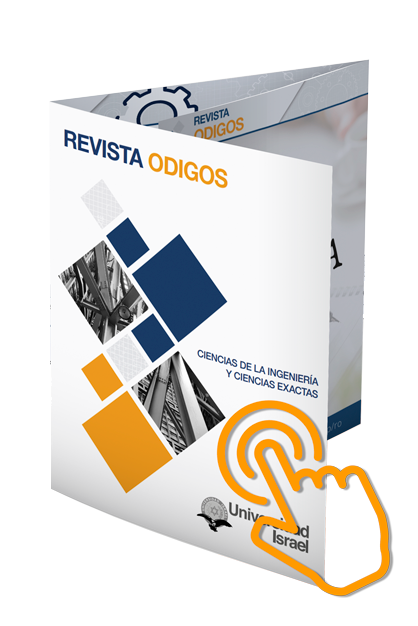Selección de un sistema de planificación de recursos empresariales adecuado para una institución académica a través del método del centroide.
DOI:
https://doi.org/10.35290/ro.v1n2.2020.325Resumen
La presente investigación establece cuál de los sistemas de planificación de recursos empresariales (ERP) ayuda a la gestión académica adecuada. La selección de un ERP pude determinarse por medio de dos demandas, utilizado la selección arbitraria por administración de la institución o por la selección analítica según las características generales de un ERP. En este contexto, la selección para la institución académica se establece por medio de un proceso analítico jerárquico (AHP), este proceso permite determinar las características funcionales, modulares y económicas de un ERP. Estas son llamadas criterios de evaluación para un grupo de alternativas de ERPs. Por lo tanto, la elección de un ERP adecuado se jerarquiza usando el modelo AHP, posteriormente estos criterios se correlación con valores cuantitativos con pesos para cada alternativa esto se determina por medio del Método del Centroide, el cual permite la toma de decisiones con múltiple criterio.
Descargas
Referencias
Efe, B. (2016). An integrated fuzzy multi criteria group decision making approach for ERP system selection. Applied Soft Computing Journal, 38, 106-117.
Ganesh, Amal, Shanil, K. N, Sunitha, C., Midhundas, A. M. (2016). OpenERP/Odoo - An Open Source Concept to ERP Solution.
Khaled, A., & Abdou Janati Idrissi, M. (2011). A learning driven model for ERP software selection based on the choquet integral: Small and medium enterprises context.
Li, H. -., Chang, S. -., & Yen, D. C. (2017). Investigating CSFs for the life cycle of ERP system from the perspective of IT governance. Computer Standards and Interfaces, 50, 269-279.
Mamoghli, S., Goepp, V., & Botta-Genoulaz, V. (2017). Aligning ERP systems with companies’ real needs: An ‘Operational model based’ method. Enterprise Information Systems, 11(2), 185-222.
Oztaysi, B. (2015). A group decision making approach using interval type-2 fuzzy ahp for enterprise information systems project selection. Journal of Multiple-Valued Logic and Soft Computing, 24(5-6), 475-500.
Olson, D. L., & Dorai, V. K. (1992). Implementation of the centroid method of solymosi and dombi. European Journal of Operational Research, 60(1), 117-129.
Qian, L. Y., Baharudin, A. S., & Kanaan-Jebna, A. (2016). Factors affecting the adoption of enterprise resource planning (ERP) on cloud among small and medium enterprises (SMES) in penang, malaysia. Journal of Theoretical and Applied Information Technology, 88(3), 398-409.
Sakakura, T., Shiba, M., & Munaka, T. (2016). An empirical study of applying a reflective-distributed memory for automation systems. Paper presented at the International Conference on Ubiquitous and Future Networks, ICUFN, , 2016-August 347-352.
Sun, H. F., & Wang, Y. Y. (2014). The evaluation of internal control system of power supply enterprises in ERP environment
Zeppetella, L., Gebennini, E., Grassi, A., & Rimini, B. (2016). A decision framework for upgrading ERP systems. Paper presented at the Proceedings of the Summer School Francesco Turco, , 13-15-September-2016 87-91.
Publicado
Número
Sección
Licencia
Derechos de autor 2020 Javier Santiago Vargas Paredes y Luciana Estefanía Nata Paredes

Esta obra está bajo una licencia internacional Creative Commons Atribución 4.0.
Los autores que participen de los procesos de evaluación y publicación de sus ediciones conservan sus derechos de autor, cediendo a la revista el derecho a la primera publicación, tal como establecen las condiciones de reconocimiento en la licencia Creative Commons Reconocimiento 4.0 Internacional (CC BY), donde los autores autorizan el libre acceso a sus obras, permitiendo que los lectores copien, distribuyan y transmitan por diversos medios, garantizando una amplia difusión del conocimiento científico publicado.
- Toda derivación, a partir de esta obra, deberá citar la fuente y a la primera publicación en esta revista. Se permiten derechos comerciales no lucrativos sobre sus contenidos.
- Los autores pueden realizar otros acuerdos contractuales independientes y adicionales para la distribución no exclusiva de la versión del artículo publicado en esta revista, es decir, podrán incluirlo en un repositorio institucional o publicarlo en un libro, siempre que indiquen claramente que el trabajo se publicó por primera vez en esta revista.
- Se permite y recomienda a los autores compartir su trabajo en línea, con la finalidad de intercambios productivos para una mayor y más rápida citación del trabajo como lo establece los efectos del movimiento ‘Acceso Abierto’.
- No puede aplicar términos legales o medidas tecnológicas que restrinjan legalmente a otros de hacer cualquier cosa que permita la licencia: https://creativecommons.org/licenses/by/4.0/deed.es
- La Revista ODIGOS es financiada completamente de los aportes realizados por nuestra entidad editora: Universidad Tecnológica Israel; por tal motivo, no establece cargos o cobros de ninguna índole a sus autores y colaboradores, así como tampoco genera pagos o remuneraciones de ningún tipo a ellos.
- Se asignará un Digital Object Identifier (DOI) a cada publicación.




